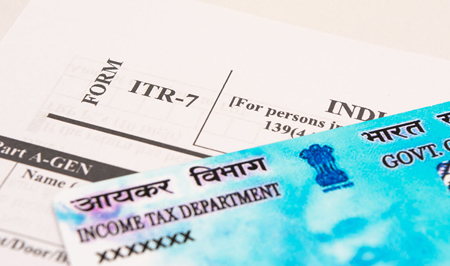| Income Tax Return (ITR) | Balance sheet |
| Computation Of Income | ITR Verification |
| Capital Tax Transaction Advisory | Corporate Tax Filing |
| Income Tax Assessment | Computation Of Advance Tax |
| MAT / AMT Certificate |


We have two types of taxes in India – Direct Tax and Indirect tax.
Direct Tax is a tax that is calculated directly on your Income e.g. tax on salary etc. Income tax is a Direct Tax.
Indirect Tax is a tax that is indirectly charged. And is put on goods or services. So if you are purchasing a mobile phone or a new suit. Most indirect taxes have now come under Goods and Services Tax (GST).
Income Tax (Direct Tax)
Anyone earning an income above a certain amount is subject to income tax. The income could be from salary, rent, and interest income from savings, income from mutual funds, sale of property or business or professional income. Income tax rates are decided at the start of the financial year in the Union Budget (in the Parliament of India). The tax paid on these incomes is called the income tax.
Income Tax Return
It is simply a form to be filed with the Income Tax Department. A Form to be filed as a statement of income earned. It is arranged in such a way that calculating tax liability, scheduling tax payments, or requesting refunds for the overpayment of taxes has been made convenient for the taxpayers. They must, first, determine the type of Income Tax Return (ITR) Form they need to fill before actually filing their Returns. Which Form is to be filled, depends on the income that the taxpayer earns. Its purpose is to report our income and taxes paid thereon to the government.
There are up to 7 types of Income Tax Return Forms, currently. We have divided them into 2 parts:
| ITR Forms for Individuals | ITR Forms for Non-Individuals |
|---|---|
| ITR-1 (Sahaj) is a tax form designed for individuals in India who earn income from salaries, one house property, interest income, agriculture, and other sources. It is a simplified income tax return form for taxpayers with income up to Rs. 50 lakh.. | ITR-5 is an income tax return form in India that is applicable to entities other than individuals, Hindu Undivided Families (HUFs), companies, and persons filing Form ITR-7. This form is used by firms, Limited Liability Partnerships (LLPs), Association of Persons (AOPs), Body of Individuals (BOIs), co-operative societies, and other such entities to file their income tax returns with the Income Tax Department. |
| ITR-2 is an income tax return form in India designed for individuals and Hindu Undivided Families (HUFs) who have income sources other than profits and gains from business or profession. Such income may be from sources such as capital gains, lottery winnings, foreign assets, rental income, etc. Taxpayers who do not have any income from business or profession are required to file ITR-2. | ITR-6 is an income tax return form in India that is applicable to all companies except those claiming tax exemption under Section 11 of the Income Tax Act. This form is used by companies to file their income tax returns with the Income Tax Department. Companies claiming tax exemption under Section 11, which pertains to income derived from property held for charitable or religious purposes, are required to file their returns using a different form, namely ITR-7. |
| ITR-3 is an income tax return form in India designed for individuals and Hindu Undivided Families (HUFs) who have income from profits and gains of a business or profession. This form is used by taxpayers who are partners in a partnership firm, but not carrying out business or profession as a proprietor. It is also applicable to individuals and HUFs who are carrying out a proprietary business or profession. Taxpayers who have income sources other than profits and gains of a business or profession are required to file a different form, such as ITR-1, ITR-2, or ITR-4. | ITR-7 is an income tax return form in India designed for persons, including companies, who are required to furnish returns under Sections 139(4A), 139(4B), 139(4C), or 139(4D) of the Income Tax Act. These sections pertain to specific categories of taxpayers who are required to file returns irrespective of their income level. These categories include entities such as trusts, political parties, institutions, and colleges that are exempt from tax, among others. Taxpayers who do not fall under these specific categories are required to file a different form, such as ITR-1, ITR-2, ITR-3, ITR-4, or ITR-5, as applicable. |
| ITR-4 (Sugam) is an income tax return form in India designed for individuals, Hindu Undivided Families (HUFs), and firms (other than Limited Liability Partnerships or LLPs) who have presumptive business income tax returns. This presumptive income is computed under Sections 44AD, 44ADA, or 44AE of the Income Tax Act, which provide for a simplified taxation regime for small businesses and professionals. Taxpayers who have income sources other than business income are required to file a different form, such as ITR-1, ITR-2, or ITR-3. |